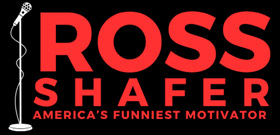The POW WOW Effect on Customer Service
Let’s cut through the noise. I’ve got a totally fresh approach to teaching customer service—a method so simple and effective that I believe it can transform your entire team, from entry-level employees to senior leadership. That’s a bold claim, right?
But here’s the deal: I’ve written and produced 14 HR training films on this subject, authored bestselling books like The Customer Shouts Back and Nobody Moved Your Cheese, and spent years consulting with organizations that wanted to become more customer-centric. And here’s what I’ve learned: The customer experience has become way too complicated.
Every year, new systems, metrics, and jargon get added into the mix. But despite all of that? Customer satisfaction continues to decline. Why? Because we’ve lost sight of the human experience.
A year ago, I decided to strip customer service back to the basics. I developed a framework that’s easy to understand, universally applicable, and immediately actionable. It’s a concept that helps your team recognize exactly what to do—and just as importantly, what not to do. I call it the POW WOW Culture.
What Is POW WOW Culture?
Before you jump to conclusions, let me clarify the term.
I’m part Blackfoot Indian, and in Native American culture, a Pow Wow is a sacred gathering. Tribes come together to heal old wounds and celebrate new alliances. It’s a space of trust, unity, and communication. And it’s the perfect metaphor for the type of customer service environment we should all be striving to create.
But there’s a twist.
We’ve all been told to “WOW the customer”—to go above and beyond and deliver extraordinary experiences. Sure, WOW moments are great. But here’s the catch: WOWs don’t build loyalty.
That’s because one single misstep—what I call a POW moment—can erase all those WOWs.
The Cost of a POW
A POW moment is when you break your brand promise. It’s when your customer feels disrespected, blamed, or anxious about dealing with your company. And research shows that five positive WOWs can be completely wiped out by just one POW.
Let me show you what I mean with two real-world examples:
Example 1: The Relationship Test
Let’s say a man holds your hand, supports you, and works hard—total WOW guy, right? But then he checks out another woman while holding your hand… and boom—POW. All those WOWs? Gone.
Example 2: Ryan Lochte
Olympic swimmer Ryan Lochte won eight gold medals and earned millions in endorsements—he was a walking WOW. But then he told one lie during the 2016 Rio Olympics. Sponsors dropped him immediately. One POW, and it all vanished.
That’s how devastating a single misstep can be.
Eliminating POW Moments Builds Loyalty
So how do you fix it? You embrace the POW WOW Culture.
-
Eliminate the POWs: Your team needs to be trained not just to impress, but to avoid damaging trust.
-
Identify Misperceptions: I’ll help you pinpoint actions you think are WOWs but your customers perceive as POWs. That misalignment can kill loyalty.
-
Create Emotional Safety: Customers return to companies that make them feel safe, heard, and respected. Not necessarily dazzled.
This method is sticky. You heard it once, and you won’t forget it.
Companies That Get It Right
Companies like Zappos and Trader Joe’s thrive not because they offer the flashiest WOWs—but because they consistently avoid creating POW moments. They deliver on expectations, they treat customers with humanity, and they build cultures of trust. That’s what drives loyalty and word-of-mouth referrals.
Book Ross Shafer: Bring the POW WOW Culture to Your Organization
I teach leaders and teams how to eliminate the friction that causes churn—and how to build emotional connections that create fans for life. If you’re serious about improving your customer experience, you need to stop chasing WOWs and start eliminating POWs. Let me show your organization how to implement the POW WOW Culture and make it unforgettable. Book my POW WOW Keynote or get a quote today.


WOW. AMAZING THOUGHT. I NEVER KNEW ABOUT POW MOMENTS WHICH WE MUST TAKE CARE